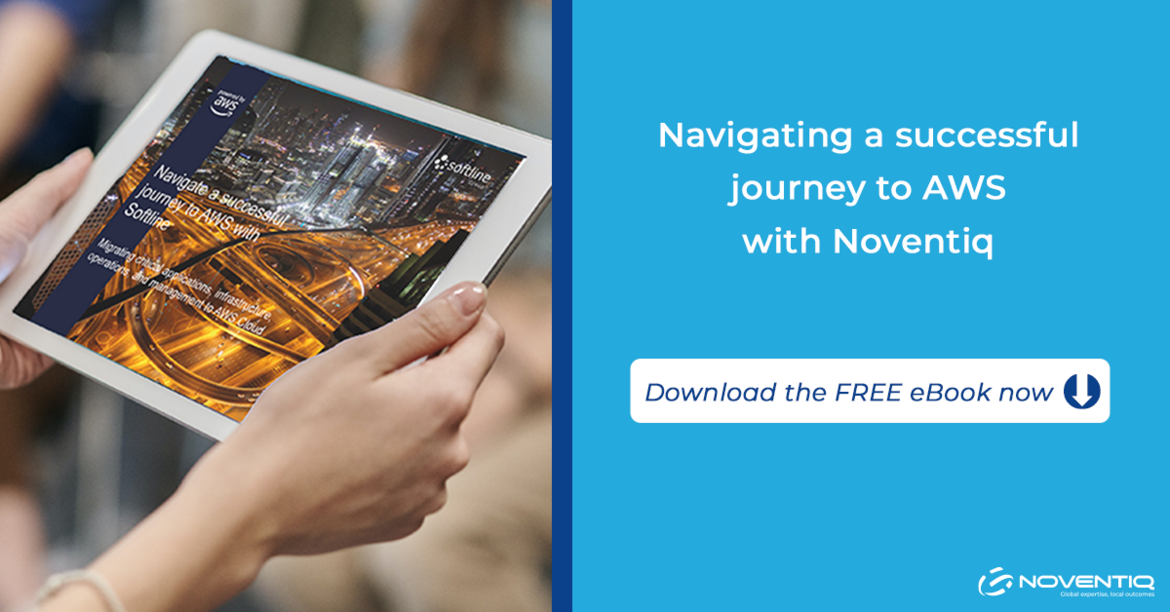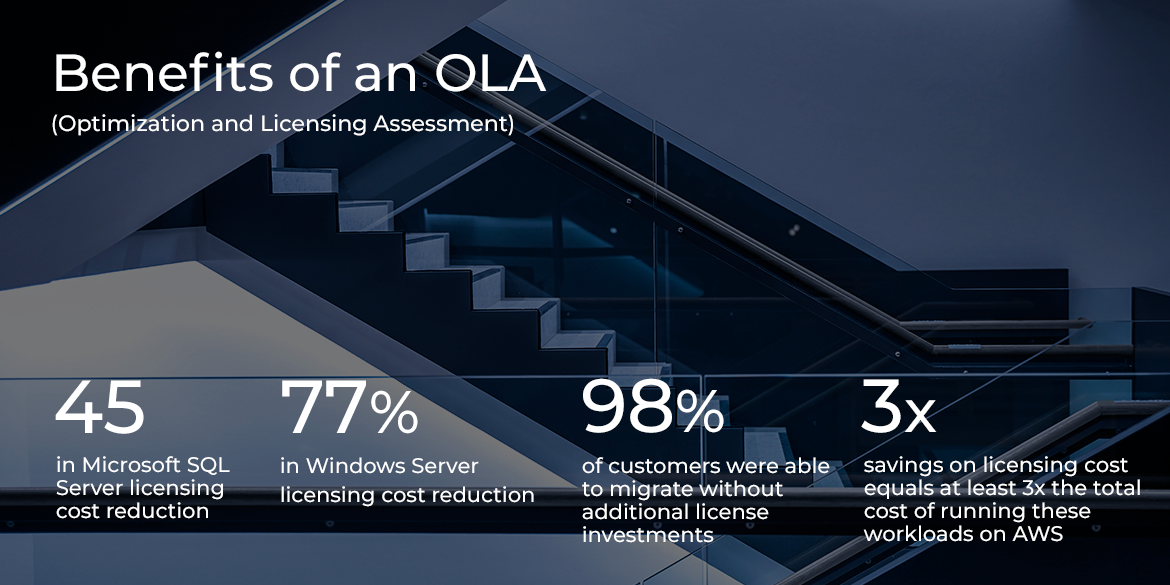The essential first step in Cost Optimization before and in the Cloud – the OLA
By migrating your enterprise workloads like Microsoft, VMware, Oracle, or SAP to the AWS Cloud, organizations across the globe are maximizing price-to-performance, reaping the benefits of modernization and lowering their carbon footprint at the same time.
AWS Optimization and Licensing Assessment (OLA) shows you how to save on third party licensing costs and run your resources more efficiently. The assessment will enable you to model your deployment options using your existing licensing entitlements and reduce costs at an average of 36% in the process.
Maximizing Efficiency: The Importance of AWS Optimization and Licensing Assessment
What are some of the advantages of using the AWS OLA (Optimization and Licensing Assessment) for the migration and modernization of your workloads? Read more in this blog.
Leveraging AWS to Reduce Organizational Carbon Footprint
In today's rapidly evolving digital landscape, organizations across the globe are actively seeking ways to reduce their carbon footprint and embrace sustainable practices. Let's explore how AWS enables organizations to reduce their carbon footprint. Read more on this blog.
How the OLA helps right-size your environment
The AWS OLA assessment is a free program that helps businesses on AWS and those planning to migrate to AWS evaluate the current IT environment for optimization. The evaluation considers three main aspects – third-party licensing costs, resource utilization, and application dependencies. The assessment enables businesses to arrive at the right licensing strategy for moving workloads to AWS.
Here are four reasons for leveraging the OLA
1. Cost Optimization
Many companies on AWS or considering migration do not have the resources or bandwidth to conduct a full-fledged analysis of their costing and resources. Upon conducting the OLA, most often businesses discover underutilization of servers and systems and the potential to save significantly on costs. Additionally, flexible options for optimizing resource usage on the cloud can lead to further cost reductions.
2. Technology and expertise-driven assessment
The assessment mandates the use of industry-leading tools that evaluate using a data and measurement-based strategy. Experts come with in-depth knowledge of Microsoft, VMware, Oracle and/or SAP licensing agreements and AWS to come up with an objective approach that best suits business and IT needs.
3. Right sizing and flexibility on AWS
The assessment not only helps identify gaps in resource utilization, but the results enable identifying optimal low-cost options suited to various workloads. Based on the assessment, one can determine the right instances and savings packages that are ideal for the business. OLA also leads businesses to choose from flexible licensing options including Bring Your Own License (BYOL), aligning cost with usage.
4. Reducing your carbon footprint
Applying changes to an infrastructure, especially such a major change as migrating thing to cloud, does have an effect on the carbon footprint of the workloads. The difference between the current situation and the optimized workloads in the AWS cloud will easy-to-understand visualized. The forecasted emissions are based on current usage and show how the carbon footprint will change as Amazon stays on path to powering its operations with 100 percent renewable energy by 2025 and drives toward net-zero carbon by 2040 as part of The Climate Pledge.
The AWS OLA Process – A Glimpse into how it works
1. Discovery
The first step in the OLA process is to make a thorough discovery of all servers in the environment and determine which resources are to be migrated, retained on-premise, or retired. This helps accurately identify the workloads to be migrated and the scope.
2. Licensing Assessment
The Optimized Licensing Assessment helps you understand your current licensing usage and get recommendations on pricing options that are thoroughly evaluated to arrive at the most accurate cost estimate for migration. The program also helps identify certain licensing rules that can be leveraged while migrating to AWS.
3. Data Consolidation
The OLA provides options to assimilate data on your current deployment using purpose-built tools. This step gives a clear picture of the storage, memory, and computing on-premise, current usage, and costs. Presented as an Exectutive Summary highlighting the potential and all the details to support the potential savings.
4. Migration Planning
The OLA helps plan migration with cost and resource optimization in mind. It provides a projection of various cloud scenarios based on utilization, license purchasing, and other criteria. You can also understand the differences between migrating existing licenses as opposed to buying new licenses. Over-provisioned on-premise resources can be rightsized on the cloud to save on costs and the directional costing can help plan research-backed business cases for migration. A solid foundation to start your migration with.
Raising the Migration Bar
With the OLA, businesses that are planning to migrate to AWS can optimize costs, resources, efficiency, and productivity. The OLA also helps companies on AWS streamline their environment for growth and cost efficiency. Leveraging the assessment brings businesses a competitive edge and harnesses the cloud confidently for the best results.
As an AWS Premier Consulting, Noventiq can help businesses optimize their workloads for Microsoft, VMware, Oracle, or SAP with the OLA to start or continue their Cloud journey. Let us help you in your Cloud journey.





